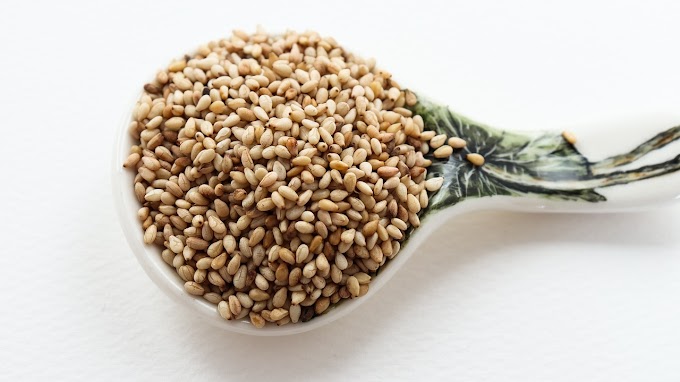Heart Health
Introduction
Maintaining a healthy heart is crucial for overall well-being, and incorporating yoga into your daily routine can be a transformative step toward improving heart health. Yoga offers a broad range of physical and mental benefits that positively impact cardiovascular well-being. In this article, we will explore ten effective yoga asanas specifically designed to target heart health, promoting strength, flexibility, and stress reduction.Significance of Heart Health: The heart, a vital organ in the human body, is responsible for pumping blood and oxygen to various parts, ensuring the proper functioning of organs and systems. A healthy heart reduces the risk of cardiovascular issues like heart attacks and strokes.
 |
| Yoga |
Benefits of Yoga Asanas for Heart Health:
Mountain Pose (Tadasana): Begin by standing tall with feet together, and arms by your sides. Root your feet into the ground, engage your thighs, and reach your arms overhead with palms facing each other. Tadasana promotes posture, and balance, and enhances blood circulation throughout the body.
Cobra Pose (Bhujangasana): Lie on your stomach, hands beneath your shoulders. Inhale, lifting your chest off the mat while keeping your pelvis grounded. Bhujangasana stretches the chest, strengthens the spine, and stimulates the heart and lungs.
Bridge Pose (Setu Bandhasana): Lie on your back with knees bent and feet hip-width apart. Lift your hips towards the ceiling, clasping your hands beneath your back. Setu Bandhasana helps reduce blood pressure, rejuvenates the heart, and induces a calming effect on the mind.
Forward Bend (Uttanasana): Stand with feet hip-width apart, hinge at the hips, and fold forward, reaching towards the ground or your shins. Uttanasana relaxes the nervous system, and alleviates stress and anxiety, promoting heart health.
Triangle Pose (Trikonasana): Start with feet wide apart, extend your arms parallel to the floor, and reach towards one foot while keeping your other arm pointed upwards. Trikonasana stretches the chest, improves blood circulation, and enhances overall heart function.
Fish Pose (Matsyasana): Lie on your back, lift your chest, arch your back, and place the crown of your head on the mat. Matsyasana opens the heart, expands the chest, improves breathing, and promotes cardiovascular health.
Camel Pose (Ustrasana): Kneel with thighs perpendicular to the floor, lean back, and reach for your heels. Ustrasana stretches the chest, strengthens the back, and enhances heart health while boosting energy levels.
Cat-Cow Pose (Marjaryasana-Bitilasana): Begin on your hands and knees, arch your back up (Cat), then dip it down (Cow), moving between the two in a flowing motion. This gentle flow improves spine flexibility, alleviates stress, and benefits heart health.
Child's Pose (Balasana): Kneel on the mat, sit back on your heels, and extend your arms forward on the ground. Balasana helps reduce stress and anxiety, indirectly supporting heart health through relaxation.
Corpse Pose (Savasana): Lie on your back with arms and legs extended, palms facing up. Savasana is a meditative posture that relaxes the body and mind, promoting overall heart health and well-being.
Practicing Yoga Safely:
Cobra Pose (Bhujangasana): Lie on your stomach, hands beneath your shoulders. Inhale, lifting your chest off the mat while keeping your pelvis grounded. Bhujangasana stretches the chest, strengthens the spine, and stimulates the heart and lungs.
Bridge Pose (Setu Bandhasana): Lie on your back with knees bent and feet hip-width apart. Lift your hips towards the ceiling, clasping your hands beneath your back. Setu Bandhasana helps reduce blood pressure, rejuvenates the heart, and induces a calming effect on the mind.
Forward Bend (Uttanasana): Stand with feet hip-width apart, hinge at the hips, and fold forward, reaching towards the ground or your shins. Uttanasana relaxes the nervous system, and alleviates stress and anxiety, promoting heart health.
Triangle Pose (Trikonasana): Start with feet wide apart, extend your arms parallel to the floor, and reach towards one foot while keeping your other arm pointed upwards. Trikonasana stretches the chest, improves blood circulation, and enhances overall heart function.
Fish Pose (Matsyasana): Lie on your back, lift your chest, arch your back, and place the crown of your head on the mat. Matsyasana opens the heart, expands the chest, improves breathing, and promotes cardiovascular health.
Camel Pose (Ustrasana): Kneel with thighs perpendicular to the floor, lean back, and reach for your heels. Ustrasana stretches the chest, strengthens the back, and enhances heart health while boosting energy levels.
Cat-Cow Pose (Marjaryasana-Bitilasana): Begin on your hands and knees, arch your back up (Cat), then dip it down (Cow), moving between the two in a flowing motion. This gentle flow improves spine flexibility, alleviates stress, and benefits heart health.
Child's Pose (Balasana): Kneel on the mat, sit back on your heels, and extend your arms forward on the ground. Balasana helps reduce stress and anxiety, indirectly supporting heart health through relaxation.
Corpse Pose (Savasana): Lie on your back with arms and legs extended, palms facing up. Savasana is a meditative posture that relaxes the body and mind, promoting overall heart health and well-being.
 |
| Yoga |
Practicing Yoga Safely:
While yoga is immensely beneficial, it's crucial to practice it safely, especially if you have pre-existing heart conditions. Always consult a healthcare professional before starting any new workout routine, including yoga. Be mindful of your body's limitations and avoid overexertion during yoga sessions.
Connection Between Yoga and Heart Health: Yoga has been proven to have a positive impact on heart well-being due to its stress-reducing and relaxation effects. By reducing stress, yoga indirectly supports heart health by lowering blood pressure and promoting a healthier lifestyle.
Lifestyle Factors for a Healthy Heart: In addition to yoga, maintaining a heart-healthy lifestyle involves factors such as a balanced diet, regular exercise, avoiding smoking and excessive alcohol consumption, and managing stress.
Conclusion
While yoga is immensely beneficial, it's crucial to practice it safely, especially if you have pre-existing heart conditions. Always consult a healthcare professional before starting any new workout routine, including yoga. Be mindful of your body's limitations and avoid overexertion during yoga sessions.
Incorporating yoga asanas into your daily routine can significantly improve heart health and contribute to overall well-being. The gentle stretches, controlled breathing, and relaxation techniques offered by yoga play a significant role in promoting cardiovascular well-being. However, it's essential to remember that yoga should complement other heart-healthy practices and not replace medical treatments or medications if you have existing heart conditions.
FAQs
1. Is yoga suitable for individuals with pre-existing heart conditions?While yoga can offer numerous benefits for heart health, individuals with existing heart conditions should consult their healthcare professionals before starting a yoga practice. It's crucial to ensure that chosen poses align with their specific health needs.
2. How often should one practice these yoga poses for optimal heart health?
2. How often should one practice these yoga poses for optimal heart health?
Consistency is key. Aim for at least 3-5 sessions per week to experience the full benefits. However, the intensity and duration of each session can vary based on individual fitness levels and health conditions.
3. Can yoga be a standalone solution for heart health, or should it be combined with other activities?
3. Can yoga be a standalone solution for heart health, or should it be combined with other activities?
While yoga provides significant benefits for heart health, it's most effective when combined with a holistic approach. A balanced diet, regular exercise, and lifestyle choices like avoiding smoking and excessive alcohol consumption contribute to overall cardiovascular well-being.
4. Are these yoga poses suitable for beginners?
4. Are these yoga poses suitable for beginners?
Yes, most of the poses listed are beginner-friendly, and modifications can be made to accommodate different fitness levels. However, beginners should start gradually, listen to their bodies, and consider attending classes or seeking guidance from a certified yoga instructor.
5. Can yoga really help reduce stress and lower blood pressure?
5. Can yoga really help reduce stress and lower blood pressure?
Yes, studies have shown that yoga can have a positive impact on stress reduction and blood pressure. The combination of controlled breathing, gentle stretches, and relaxation techniques in yoga can contribute to overall mental well-being and heart health.
6. Are there any contraindications for practicing these poses?
6. Are there any contraindications for practicing these poses?
Individuals with specific health concerns, such as recent surgeries, joint issues, or pregnancy, should consult with a healthcare professional before attempting certain poses. Additionally, those with severe heart conditions should approach yoga with caution and under proper guidance.
7. Can these poses be performed by individuals of all age groups?
7. Can these poses be performed by individuals of all age groups?
In general, these yoga poses are suitable for individuals of various age groups. However, modifications may be necessary based on individual flexibility and health conditions. It's advisable to approach yoga with awareness and make adjustments as needed.
8. Is it necessary to warm up before practicing these poses?
8. Is it necessary to warm up before practicing these poses?
Yes, warming up is essential to prepare the body for yoga poses. Gentle stretches, joint rotations, or a short session of aerobic activity can help increase blood flow and flexibility, and reduce the risk of injury during the practice.
9. Can yoga replace medical treatments or medications for heart conditions?
9. Can yoga replace medical treatments or medications for heart conditions?
No, yoga should complement existing medical treatments and not replace them. Individuals with heart conditions should continue prescribed medications and treatments as advised by their healthcare professionals. Yoga serves as a supportive practice for overall heart health.
10. How long does it take to see noticeable improvements in heart health through yoga?
10. How long does it take to see noticeable improvements in heart health through yoga?
The timeline for experiencing benefits varies from person to person. Some may notice improvements in flexibility and stress reduction after a few sessions, while cardiovascular improvements may take longer. Consistency and a mindful approach to practice contribute to long-term heart health benefits.







